#darryl pinckney
Photo
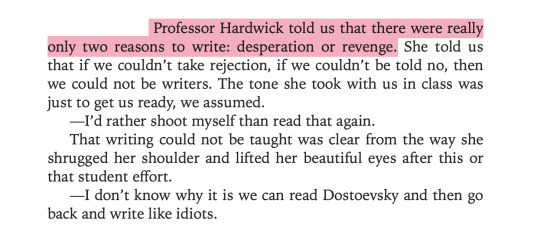
Darryl Pinckney, Come Back in September: A Literary Education on West Sixty-seventh Street, Manhattan (2022)
108 notes
·
View notes
Text

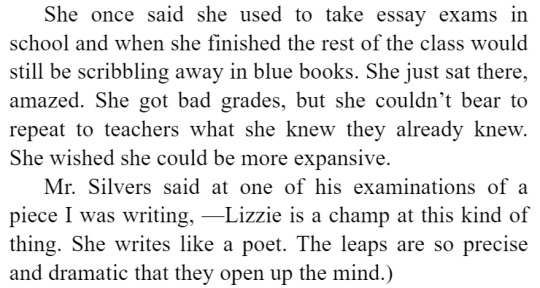
on Elizabeth Hardwick's prose -- poetic or not
Darryl Pinckney, Come Back in September
8 notes
·
View notes
Text
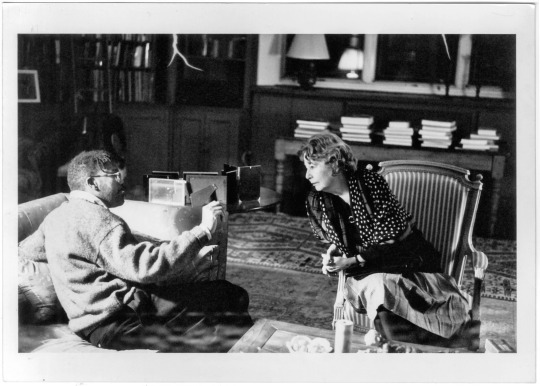
Elizabeth Hardwick, July 27, 1916 – December 2, 2007.
With Darryl Pinckney.
10 notes
·
View notes
Text
I remember Luc Sante writing once that one of the surprises in your work is that there you were, in the same scene with all this, and yet, you could take these pictures.
Goldin: I had to take these pictures. They gave me a reason to be there. I think the whole reason that I write about in The Ballad, about my sister’s death and the need to record everything, was predominant. It wasn’t an act of will or very much about pursuing art. It was out of need. All my work, I think, is out of need.
— Darryl Pinckney in conversation with Nan Goldin for Aperture, December 2022
3 notes
·
View notes
Link
January 6, 2023
Making a living as a writer has always been an elusive pursuit. The competition is fierce. The measures of success are subjective. Even many people at the top of the profession can’t wholeheartedly recommend it. The critic Elizabeth Hardwick, Darryl Pinckney recalls in his evocative new memoir, “told us that there were really only two reasons to write: desperation or revenge. She told us that if we couldn’t take rejection, if we couldn’t be told no, then we could not be writers.”
In spite of these red flags, countless people set out on this path. One lifeline, if you’re lucky enough to find it, is mentorship. Literary mentors offer the conventional benefits: perspective, direction, connections. But the partnerships that result are less transactional and more messy and serendipitous than those that tend to exist in other industries. While many people might think of such arrangements as altruistic or at least utilitarian, Pinckney’s book, which chronicles his tutelage under Hardwick, shows that artistic mentorships, especially literary ones, are far more fraught. Together, he and Hardwick weathered two intersecting careers, each with fallow periods and moments of success. This can be a challenge for creative, fragile egos—leading to a fair amount of projection, blame, and tension. And yet, the mentorships that endure allow for unpredictability and evolution.
In his memoir, Come Back in September: A Literary Education on West Sixty-Seventh Street, Manhattan, the critic and novelist Pinckney writes about his coming of age in the 1970s and ’80s under the spell of two great lions of 20th-century American letters, Hardwick and Barbara Epstein. These “unrepeatable women” are best known as two of the co-founders of The New York Review of Books, but they had vibrant and influential careers beyond the magazine: Epstein as an editor and tastemaker (one of her earliest projects was editing The Diary of a Young Girl by Anne Frank), and Hardwick as a critic, novelist, and professor.
Other literary figures of the time (Norman Mailer, Gore Vidal, Susan Sontag, Philip Roth) occupied the spotlight then and for decades to follow, but of late, Hardwick has enjoyed a posthumous revival, celebrated for her diligent and relentless work in a few recent books (Cathy Curtis’s dry but noteworthy 2021 biography, A Splendid Intelligence; Saskia Hamilton’s brilliant The Dolphin Letters, which collects Hardwick’s correspondence with her ex-husband, Robert Lowell; and two posthumous essay collections, one of which was edited by Pinckney). Epstein surfaces throughout these books as a trusted friend of Hardwick, and a superb editor to both Hardwick and Pinckney.
As an undergraduate at Columbia, with aspirations of becoming a poet, Pinckney took a creative-writing class with Hardwick. But it wasn’t long before Hardwick realized that her student’s talents rested not in poetry but in prose. Soon enough, she was inviting him for weekly dinners at her home. These gatherings became a thoroughly informal seminar of their own—many featuring visits from Hardwick’s friends and fellow writers. As formal academic boundaries dissolved between Hardwick and Pinckney, it became clear that the classroom was only one place to grow as a writer.
Hardwick’s role as Pinckney’s mentor was different from that as a teacher; nurturing talent was something more sacred and essential than instruction. “That writing could not be taught was clear from the way she shrugged her shoulder and lifted her beautiful eyes after this or that student effort … But a passion for reading could be shared, week after week. The only way to learn to write was to read,” Pinckney remembers. As a mentor, Hardwick helped fill the gaps in Pinckney’s education by offering book recommendations and fostering discussion, but her influence was also felt in deeper and subtler ways. By welcoming Pinckney, as an equal, into her home and among her friends, she helped him realize that there was a place for him in the world of letters. For a young man hungry to burst past the limits of his experience, there could be no better circle in which to insinuate himself. Hardwick benefited as well: The relationship was a means of reinvention and renewal, in which her ideas, too, could flourish.
But this wasn’t utopia. Throughout the memoir, Pinckney and his peers grapple with familial expectations and judgments, as well as with the threat of AIDS. New York had been an escape for these precocious undergraduates who kept their sexuality a secret from their families back home; mentors like Hardwick provided the answers and advice that they couldn’t get from their biological families. Hardwick says to Pinckney at one point: “You came to New York to be what you are … A mad black queen.” But these elders didn’t always fully grasp what young writers needed most.
Pinckney notes the friction that surfaced between Hardwick, an older white woman from the South, and himself, a young, Black, gay man from the Midwest, recalling instances when her language was insensitive or even offensive. Beyond these tensions, there was also Hardwick’s frustration at her own stalled ambitions, which seemed to manifest itself through admonishments of Pinckney: “Why are you writing ten pieces for seven hundred and fifty dollars when you could have had an advance of seventy-five hundred dollars for twenty pages?” she asks of Pinckney, who was making his living reviewing books instead of writing them. And yet, how much of that tough love was projection? Hardwick seemed to be directing her critical gaze inward, asking herself what she had to show for a life’s work.
As their relationship progressed, Hardwick began to express insecurities—both in her role as a mentor, and in her career as a writer. “I think the worst thing that ever happened to you was meeting me,” she half-jokes to Pinckney, meanwhile encouraging him to “make your book salable” and not be “too literary all your life.” And when it came to writing another novel after her acclaimed Sleepless Nights, she confided her fears in him: “I’m so scared. What am I doing? Don’t be like me.” These episodes reveal the unique intimacy and fragility of the relationship. After the initial hierarchy of mentorship, clear authority fades as the partners trade off as teacher and student. The stronger of the two (years and experience being irrelevant in moments of self-doubt) can lead the other out of these rough patches. But too many instances of vulnerability can wear down a relationship.
Ultimately, about 390 pages into the memoir, Pinckney leaves New York City for Berlin on New Year’s Eve of 1987. The move doesn’t come out of nowhere. Throughout the book, Pinckney foreshadows the impact of AIDS on his community and the city at large, and describes how he and his circle lost countless friends in the 1980s. At this point, his window as a precocious young writer was closing as well, with no published book to show for it. It was time to push himself to a new level.
Rather than scrutinize his reasons for leaving New York, Pinckney simply marks his exit by abandoning his first-person narration for Hardwick’s and Epstein’s voices, presented in a selection of letters and interspersed with his own journal entries from around the same time. The letters are offered without context or analysis; they leave much unsaid of his departure, but reflect his mixed emotions about it.
Ultimately, this is not only a book about the drama of these deep, lifelong relationships. What Pinckney seems to want to elevate is their best elements: enthusiasm, forgiveness, support, continuity. Time trudges on, and from afar, Pinckney receives word of friends and colleagues who have passed away. With these losses, the memoir closes on a bittersweet note. Pinckney remembers Hardwick quoting the poet Marianne Moore: “After everything we have loved is lost, then we revive.” Literary mentorship offers the power of a phoenix. Even at a writer’s lowest point, the lifeline of conversation and intellectual exchange urges them forward.
0 notes
Link
January 6, 2023
Making a living as a writer has always been an elusive pursuit. The competition is fierce. The measures of success are subjective. Even many people at the top of the profession can’t wholeheartedly recommend it. The critic Elizabeth Hardwick, Darryl Pinckney recalls in his evocative new memoir, “told us that there were really only two reasons to write: desperation or revenge. She told us that if we couldn’t take rejection, if we couldn’t be told no, then we could not be writers.”
In spite of these red flags, countless people set out on this path. One lifeline, if you’re lucky enough to find it, is mentorship. Literary mentors offer the conventional benefits: perspective, direction, connections. But the partnerships that result are less transactional and more messy and serendipitous than those that tend to exist in other industries. While many people might think of such arrangements as altruistic or at least utilitarian, Pinckney’s book, which chronicles his tutelage under Hardwick, shows that artistic mentorships, especially literary ones, are far more fraught. Together, he and Hardwick weathered two intersecting careers, each with fallow periods and moments of success. This can be a challenge for creative, fragile egos—leading to a fair amount of projection, blame, and tension. And yet, the mentorships that endure allow for unpredictability and evolution.
In his memoir, Come Back in September: A Literary Education on West Sixty-Seventh Street, Manhattan, the critic and novelist Pinckney writes about his coming of age in the 1970s and ’80s under the spell of two great lions of 20th-century American letters, Hardwick and Barbara Epstein. These “unrepeatable women” are best known as two of the co-founders of The New York Review of Books, but they had vibrant and influential careers beyond the magazine: Epstein as an editor and tastemaker (one of her earliest projects was editing The Diary of a Young Girl by Anne Frank), and Hardwick as a critic, novelist, and professor.
Other literary figures of the time (Norman Mailer, Gore Vidal, Susan Sontag, Philip Roth) occupied the spotlight then and for decades to follow, but of late, Hardwick has enjoyed a posthumous revival, celebrated for her diligent and relentless work in a few recent books (Cathy Curtis’s dry but noteworthy 2021 biography, A Splendid Intelligence; Saskia Hamilton’s brilliant The Dolphin Letters, which collects Hardwick’s correspondence with her ex-husband, Robert Lowell; and two posthumous essay collections, one of which was edited by Pinckney). Epstein surfaces throughout these books as a trusted friend of Hardwick, and a superb editor to both Hardwick and Pinckney.
As an undergraduate at Columbia, with aspirations of becoming a poet, Pinckney took a creative-writing class with Hardwick. But it wasn’t long before Hardwick realized that her student’s talents rested not in poetry but in prose. Soon enough, she was inviting him for weekly dinners at her home. These gatherings became a thoroughly informal seminar of their own—many featuring visits from Hardwick’s friends and fellow writers. As formal academic boundaries dissolved between Hardwick and Pinckney, it became clear that the classroom was only one place to grow as a writer.
Hardwick’s role as Pinckney’s mentor was different from that as a teacher; nurturing talent was something more sacred and essential than instruction. “That writing could not be taught was clear from the way she shrugged her shoulder and lifted her beautiful eyes after this or that student effort … But a passion for reading could be shared, week after week. The only way to learn to write was to read,” Pinckney remembers. As a mentor, Hardwick helped fill the gaps in Pinckney’s education by offering book recommendations and fostering discussion, but her influence was also felt in deeper and subtler ways. By welcoming Pinckney, as an equal, into her home and among her friends, she helped him realize that there was a place for him in the world of letters. For a young man hungry to burst past the limits of his experience, there could be no better circle in which to insinuate himself. Hardwick benefited as well: The relationship was a means of reinvention and renewal, in which her ideas, too, could flourish.
But this wasn’t utopia. Throughout the memoir, Pinckney and his peers grapple with familial expectations and judgments, as well as with the threat of AIDS. New York had been an escape for these precocious undergraduates who kept their sexuality a secret from their families back home; mentors like Hardwick provided the answers and advice that they couldn’t get from their biological families. Hardwick says to Pinckney at one point: “You came to New York to be what you are … A mad black queen.” But these elders didn’t always fully grasp what young writers needed most.
Pinckney notes the friction that surfaced between Hardwick, an older white woman from the South, and himself, a young, Black, gay man from the Midwest, recalling instances when her language was insensitive or even offensive. Beyond these tensions, there was also Hardwick’s frustration at her own stalled ambitions, which seemed to manifest itself through admonishments of Pinckney: “Why are you writing ten pieces for seven hundred and fifty dollars when you could have had an advance of seventy-five hundred dollars for twenty pages?” she asks of Pinckney, who was making his living reviewing books instead of writing them. And yet, how much of that tough love was projection? Hardwick seemed to be directing her critical gaze inward, asking herself what she had to show for a life’s work.
As their relationship progressed, Hardwick began to express insecurities—both in her role as a mentor, and in her career as a writer. “I think the worst thing that ever happened to you was meeting me,” she half-jokes to Pinckney, meanwhile encouraging him to “make your book salable” and not be “too literary all your life.” And when it came to writing another novel after her acclaimed Sleepless Nights, she confided her fears in him: “I’m so scared. What am I doing? Don’t be like me.” These episodes reveal the unique intimacy and fragility of the relationship. After the initial hierarchy of mentorship, clear authority fades as the partners trade off as teacher and student. The stronger of the two (years and experience being irrelevant in moments of self-doubt) can lead the other out of these rough patches. But too many instances of vulnerability can wear down a relationship.
Ultimately, about 390 pages into the memoir, Pinckney leaves New York City for Berlin on New Year’s Eve of 1987. The move doesn’t come out of nowhere. Throughout the book, Pinckney foreshadows the impact of AIDS on his community and the city at large, and describes how he and his circle lost countless friends in the 1980s. At this point, his window as a precocious young writer was closing as well, with no published book to show for it. It was time to push himself to a new level.
Rather than scrutinize his reasons for leaving New York, Pinckney simply marks his exit by abandoning his first-person narration for Hardwick’s and Epstein’s voices, presented in a selection of letters and interspersed with his own journal entries from around the same time. The letters are offered without context or analysis; they leave much unsaid of his departure, but reflect his mixed emotions about it.
Ultimately, this is not only a book about the drama of these deep, lifelong relationships. What Pinckney seems to want to elevate is their best elements: enthusiasm, forgiveness, support, continuity. Time trudges on, and from afar, Pinckney receives word of friends and colleagues who have passed away. With these losses, the memoir closes on a bittersweet note. Pinckney remembers Hardwick quoting the poet Marianne Moore: “After everything we have loved is lost, then we revive.” Literary mentorship offers the power of a phoenix. Even at a writer’s lowest point, the lifeline of conversation and intellectual exchange urges them forward
0 notes
Text
Looking for something to read this Juneteenth & Pride Month?

Here are nine great books by 🏳️🌈 black authors:
“Behind You” by Jacqueline Woodson
“The Late Americans” by Brandon Taylor
“Black Deutschland” by Darryl Pinckney
“Zami: A New Spelling Of My Name” by Audre Lorde
“Memorial” by Bryan Washington
“The Black Flamingo” by Dean Atta
“When They Tell You To Be Good” by Prince Shakur
“Loving Her” by Ann Shockley
“Johnny Would You Love Me If My Dick Were Bigger” by Brontez Purnell
27 notes
·
View notes
Photo

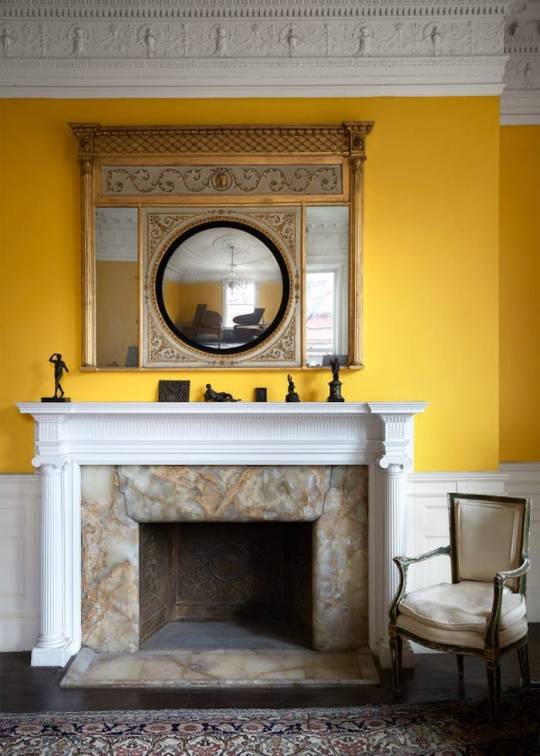
What a lovely color drenched apt. in an historic building in Harlem, New York City. The living room is a bright yellow that gives the decor a lively look. It’s perfect complement to the white wainscoting.

The home office is a deep green with hints of rusty orange. The colors make the simple room look so attractive.
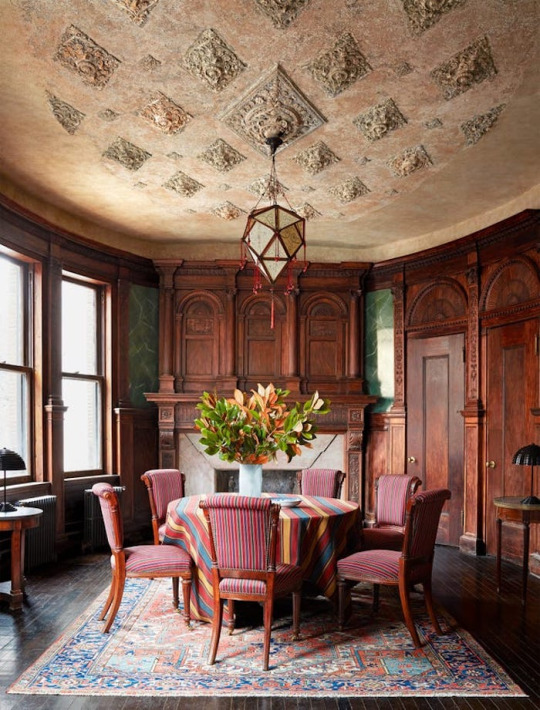
The dining room is stunning- look at the ceiling, the wood and the fireplace. What an apt.

Love the baby blue kitchen and red chairs. The old chippy tiles on the stove wall!

The bedroom is round and has a a beautiful fireplace. The shade of red has the perfect level of sophistication and the blue stripes give it polish. Whoever chose these colors had a great eye.
https://www.elledecor.com/design-decorate/house-interiors/a39736095/james-fenton-darryl-pinckney-harlem-townhouse/?
96 notes
·
View notes
Note
Advice/hard truths for writers?
The best piece of practical advice I know is a classic from Hemingway (qtd. here):
The most important thing I’ve learned about writing is never write too much at a time… Never pump yourself dry. Leave a little for the next day. The main thing is to know when to stop. Don’t wait till you’ve written yourself out. When you’re still going good and you come to an interesting place and you know what’s going to happen next, that’s the time to stop. Then leave it alone and don’t think about it; let your subconscious mind do the work.
Also, especially if you're young, you should read more than you write. If you're serious about writing, you'll want to write more than you read when you get old; you need, then, to lay the important books as your foundation early. I like this passage from Samuel R. Delany's "Some Advice for the Intermediate and Advanced Creative Writing Student" (collected in both Shorter Views and About Writing):
You need to read Balzac, Stendhal, Flaubert, and Zola; you need to read Austen, Thackeray, the Brontes, Dickens, George Eliot, and Hardy; you need to read Hawthorne, Melville, James, Woolf, Joyce, and Faulkner; you need to read Tolstoy, Dostoyevsky, Turgenev, Goncherov, Gogol, Bely, Khlebnikov, and Flaubert; you need to read Stephen Crane, Mark Twain, Edward Dahlberg, John Steinbeck, Jean Rhys, Glenway Wescott, John O'Hara, James Gould Cozzens, Angus Wilson, Patrick White, Alexander Trocchi, Iris Murdoch, Graham Greene, Evelyn Waugh, Anthony Powell, Vladimir Nabokov; you need to read Nella Larsen, Knut Hamsun, Edwin Demby, Saul Bellow, Lawrence Durrell, John Updike, John Barth, Philip Roth, Coleman Dowell, William Gaddis, William Gass, Marguerite Young, Thomas Pynchon, Paul West, Bertha Harris, Melvin Dixon, Daryll Pinckney, Darryl Ponicsan, and John Keene, Jr.; you need to read Thomas M. Disch, Joanna Russ, Richard Powers, Carroll Maso, Edmund White, Jayne Ann Phillips, Robert Gluck, and Julian Barnes—you need to read them and a whole lot more; you need to read them not so that you will know what they have written about, but so that you can begin to absorb some of the more ambitious models for what the novel can be.
Note: I haven't read every single writer on that list; there are even three I've literally never heard of; I can think of others I'd recommend in place of some he's cited; but still, his general point—that you need to read the major and minor classics—is correct.
The best piece of general advice I know, and not only about writing, comes from Dr. Johnson, The Rambler #63:
The traveller that resolutely follows a rough and winding path, will sooner reach the end of his journey, than he that is always changing his direction, and wastes the hours of day-light in looking for smoother ground and shorter passages.
I've known too many young writers over the years who sabotaged themselves by overthinking and therefore never finishing or sharing their projects; this stems, I assume, from a lack of self-trust or, more grandly, trust in the universe (the Muses, God, etc.). But what professors always tell Ph.D. students about dissertations is also true of novels, stories, poems, plays, comic books, screenplays, etc: There are only two kinds of dissertations—finished and unfinished. Relatedly, this is the age of online—an age when 20th-century institutions are collapsing, and 21st-century ones have not yet been invented. Unless you have serious connections in New York or Iowa, publish your work yourself and don't bother with the gatekeepers.
Other than the above, I find most writing advice useless because over-generalized or else stemming from arbitrary culture-specific or field-specific biases, e.g., Orwell's extremely English and extremely journalistic strictures, not necessarily germane to the non-English or non-journalistic writer. "Don't use adverbs," they always say. Why the hell shouldn't I? It's absurd. "Show, don't tell," they insist. Fine for the aforementioned Orwell and Hemingway, but irrelevant to Edith Wharton and Thomas Mann. Freytag's Pyramid? Spare me. Every new book is a leap in the dark. Your project may be singular; you may need to make your own map as your traverse the unexplored territory.
Hard truths? There's one. I know it's a hard truth because I hesitate even to type it. It will insult our faith in egalitarianism and the rewards of earnest labor. And yet, I suspect the hard truth is this: ineffables like inspiration and genius count for a lot. If they didn't, if application were all it took, then everybody would write works of genius all day long. But even the greatest geniuses usually only got the gift of one or two all-time great work. This doesn't have to be a counsel of despair, though: you can always try to place yourself wherever you think lightning is likeliest to strike. That's what I do, anyway. Good luck!
15 notes
·
View notes
Text


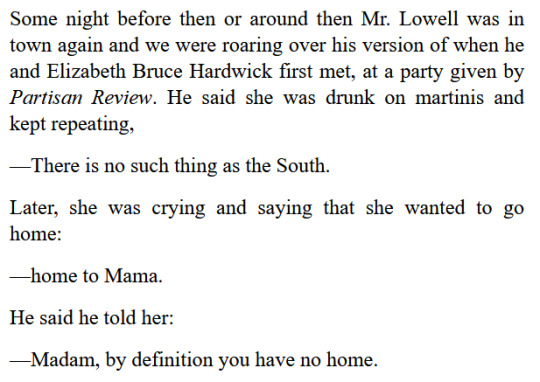
Sleepless Nights by Elizabeth Hardwick
Come Back in September by Darryl Pinckney
2 notes
·
View notes
Text
“my diaries, of which there are thousands—i have to make sure they’re destroyed when i die because they weren’t written for anyone except for me to stay alive. […] they’re just about me, and my pain, and nothing else. there are no great observations about new york in the ’80s. they’re not warhol’s diaries. they’re just about being depressed.”
— nan goldin, qtd. by darryl pinckney in “nan goldin reflects on art, addiction, & activism” in aperture (x)
8 notes
·
View notes
Photo

Nan Goldin. She is our hero. What more can we say? Her work, her life, her advocacy, her utter bravery. Images and spreads are from 'Nan Goldin: This Will Not End Well,' published by @steidlverlag and going fast. This is the first book to present a comprehensive overview of Nan Goldin’s work as a filmmaker. Accompanying the retrospective show and tour of the same name, organized by @modernamuseet Stockholm, the book draws from the nearly dozen slideshows and films Goldin has made from thousands of photographs, film sequences, audio tapes and music tracks. The stories told range from the trauma of her family history to the portrayal of her bohemian friends to a journey into the darkness of addiction. By focusing exclusively on slideshows and video installations, 'This Will Not End Well' aims to fully embrace Goldin’s vision of how her work should be experienced. The book retains the presentation of the slide shows by showing all images in the same format on a black background and sequenced as they are in the sources. The 20 texts, the majority of which are newly commissioned by Goldin, complement and deepen the intention of her work. Edited by Teresa Hahr, Fredrik Liew. Text by Vince Aletti, Thomas Beard, Guido Costa, Marvin Heiferman, Roni Horn, Patrick Radden Keefe, Caitlín R. Kiernan, Fredrik Liew, Gabor Maté, Eileen Myles, Cookie Mueller, Alfred Pacquement, Darryl Pinckney, Rene Ricard, Lucy Sante, Sarah Schulman, Anne Swärd, Hala Wardé, David Wojnarowicz. Interview by Andrea Lissoni. Drawings by Hala Wardé. Traveling to @stedelijkmuseum @neue_nationalgalerie @pirelli_hangarbicocca @nangoldinstudio #nangoldin #nangoldinthiswillnotendwell #thiswillnotendwell #womenshistorymonth #womenshistory https://www.instagram.com/p/CpP62bUu3Ds/?igshid=NGJjMDIxMWI=
6 notes
·
View notes
Text
Home Decor Online : Buy Home Decoration Gadgets
These items may seem out of place in an office or dining room. Cabinets are usually a focus in kitchens, bathrooms, and different storage-lined spaces, so consider giving yours a tune-up. A fast coat of paint is normally a low-maintenance approach to clean up your cabinets and transform your area.
Once you have photographs you like, study the small print, suggested Mr. Kleinberg. “See the place sample is used versus the place solids are used, and the place color can be utilized successfully or not,” he mentioned. It may also assist inform every thing from the sort of furnishings you might prefer to a potential technique for window coverings. Not solely will the additional surface area help with organization, nevertheless it's additionally a good way to make the entire space really feel more luxe. In a Toronto home by Colette van den Thillart, the designer decided to replace the original mantel with a sculptural, eye-catching hearth encompass. Literary couple James Fenton and Darryl Pinckney opted for brilliant, jewel-toned walls in shades of green, blue, yellow—and even purple—throughout their Harlem townhouse.
Layering therapies provides you the option of making a look that suits the day. For instance, shades can block out the view when privacy is needed or go as a lot as emphasize the view. A valance over the shade ensures home windows are by no means too stark, and draperies along the sides add softness. Use these designer tricks to create a personal retreat you may get pleasure from every day. The Home Decor phase contains quite lots of equipment and furnishings used to make a space extra aesthetically interesting.
However, daylight will nonetheless normally leak into the room at the edges of the shade. Wirecutter researched lots of of price range area rugs, interviewed specialists, and tested rugs with panelists, then put their feet on our favorites at home to search out one of the best. If so, plan for a wall mount or a media unit to hold it, as well as a path for cables that won’t be unsightly. Statement-making wall coverings and finishes are typically costly, but as a outcome of foyers are usually small, these merchandise can often be put in with out breaking the financial institution. If Vivamart reviews can’t be averted, seal large furnishings beneath plastic drop cloths and accessories in bins with tape to guard them.
Contemporary home decor is the current fashionable home decor that consists of wall mirrors, up to date wall artwork, human figurines, etc which may be totally fashionable in look and never seen before. All these home decor items are made using inherited methods that make them last more as nicely as look wonderful. These also stand as a fantastic reward option around the festive season in addition to celebrations such as home warming, etc.
Because even if somebody else’s space doesn’t look exactly like yours, you might end up with an idea worth trying in your home. Go for a customized headboard, like this coastal-inspired one that brings the great thing about the beach inside. Use planks of driftwood or recycled oars to recreate this look. About one hour of effort and $30 price of contact paper later, this stylish dresser was utterly transformed.
A clear understanding of the identical lets you make higher selections that swimsuit the wants of your loved ones. I've been doing this since elementary school (weird flex?). Whenever I get bored with a room but do not have new furniture funds, I transfer every thing round. And while some rooms only work with furniture organized one particular method, many can handle a radically different association. We could earn commission from links on this web page, however we solely advocate merchandise we love. This woven basket is perfect for stashing blankets next to the couch or as a classy cover for a plant pot.
So, we decorate these spaces with home décor gadgets that we love. Home interior design and residential decoration requires lots of research, and is not one thing that can be accomplished in a snap. And the largest headache is purchasing for decoration gadgets, right? On prime of that, we're continually in the pursuit of finding the right home décor items that we're in search of, and that might be quite the duty.
Sneaking art into less obvious spots, like your bathroom, can convey your house collectively, making it feel extra thoughtfully embellished and naturally, extra particular. Headboards are a well-liked way to gown up your bed room, but they’re not the only possibility on provide. Decorating the wall behind your mattress may be an effective way to add shade, texture, or general statement-making enchantment to your house. Still life home decor on a wooden table in the living room. Decorative bottle with flowers and a candle near a knitted sweater.

#painting frame#ikea sofa bed#display shelf#kitchen rack#jean bed#earthy pink#artificial fruits for decoration#broom and dustpan#outdoor table and chair with umbrella#display shelve#super single mattress#portable desk for laptop#carousel music box#koleksi sofa bed#armrest cover sofa#beige bed frame#swivel office chair#sofa 3 seater#4 step ladder#3 bin storage organizer#4 steps ladder#patio table and chair with umbrella#earth tone blush#portable desk table#wire basket with liner#desk shelf unit#carousel horse music box#horse music box carousel#rice washer strainer#high table and chair set
1 note
·
View note
Text
Home Decor Concepts: 11 Straightforward Diy Suggestions From The Professionals
“Figure out the type that you simply respond to most,” stated Brad Ford, an inside designer in New York City, and develop a file of favorite pictures. One possibility is to draw a ground plan the old school means, with paper, a pencil and a ruler. However, most professional designers use drafting software like AutoCAD. Vivamart reviews on this bedroom makes it feel special and intimate in methods you'd never be succesful of achieve with a lighter hue (this particular shade is Farrow & Ball Railings).
Recycle your old ones and purchase new towels and washcloths in a single stable colour (you deserve it). Some designers even upholster bedrooms walls for a literal soft touch. Throw pillows present extra again assist for deep sofas and chairs. Attractive baskets are perfect for tidying up children’s toys in a hurry. This guide from Wirecutter will stroll you through everything you should know to deliver home a sturdy, comfortable and aesthetically pleasing piece of furnishings. The decoration of a home for somebody who frequently hosts giant dinner parties, as an example, must be different from a home for somebody who eats out at eating places each evening.
If you run into this widespread issue, think about inserting your mirror within the middle of your mantel and flanking its sides with different décor pieces . Painting your cabinets isn’t the one way to give your kitchen a makeover. If you don’t thoughts exerting somewhat effort, you can craft a daring backsplash utilizing a set of statement-making tiles.
When it comes to purchasing home decor gadgets, all of us wish to go to some reliable place, don't we? On our portal, you'll have the ability to discover superb handmade home decor showpieces that are distinctive in each form and can certainly make heads flip when you've visitors over. We have a variety of fantastic wall decor items, wall clocks, idols & figurines, and rather more that are absolutely going to be adored by everybody that visits you.
Once you might have pictures you want, examine the small print, advised Mr. Kleinberg. “See the place pattern is used versus where solids are used, and the place shade can be utilized efficiently or not,” he said. It will also assist inform everything from the type of furniture you may wish to a potential technique for window coverings. Not only will the additional surface house help with group, but it's additionally an efficient way to make the entire area feel more luxe. In a Toronto home by Colette van den Thillart, the designer determined to switch the unique mantel with a sculptural, eye-catching fireplace surround. Literary couple James Fenton and Darryl Pinckney opted for shiny, jewel-toned walls in shades of green, blue, yellow—and even purple—throughout their Harlem townhouse.
Most table lamps have lampshades, which can add a splash of shade to the room. Floor lamps can mix into the background of a room or be a showpiece that pulls consideration. You can mix or match lamps for a room, and a few are even obtainable in units. If your own home is due for a design update but you've a limited price range and even much less time, you're in the right place. We got here up with greater than 50 home decor concepts to get you began.
So, we beautify these areas with home décor gadgets that we love. Home inside design and home decoration requires plenty of research, and isn't something that can be carried out in a snap. And the biggest headache is purchasing for decoration items, right? On top of that, we're constantly within the pursuit of discovering the perfect home décor items that we're in search of, and that could be quite the duty.
If you continually maintain a vase of flowers in your kitchen or living room, extend that love for recent blooms throughout the home. It's the proper excuse to spend money on a new vase on your bedroom or bathroom. In this New York condo designed by Katie Ridder, a globe-shaped vase provides a nice bubble detail.
You need not put aside an entire room; just select a spot that is out of the primary move of household activity. "All you need is a cushty chair, a flooring lamp, and a facet desk on your tea cup," Eyles says. Designate a spot in your house the place stress-free is the necessary thing operate, suggests Bankston May. Tailor it to your alternative of relaxing exercise, whether that is reading, listening to music, or meditating.
A lounge is the proper place to show off vintage finds and distinctive family heirlooms which were collected over time. Make your arrangement of paintings and curios stand out even more by going for a dark-colored backdrop. Designer Alexandra Kaehler selected a deep green shade for this basement clubhouse.
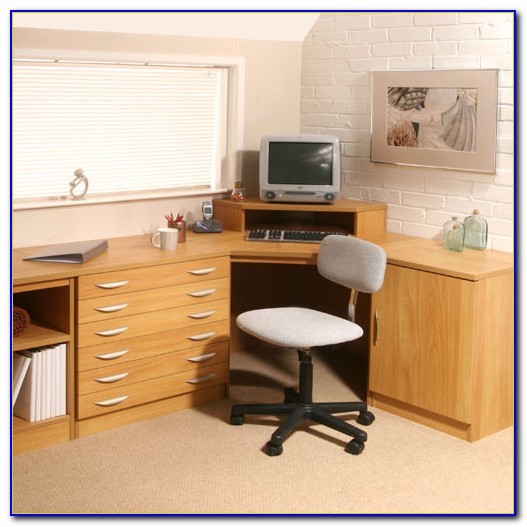
Running down the middle of the dining desk, these cane webbing covered votive holders add texture to a pretty centerpiece. A chair can go from being cold to inviting with just the addition of a snug pillow. And as lengthy as you might have locations to place them, pillows can go pretty much wherever, from the ground to a bench to a settee to a mattress. There's no reason why fresh flowers should only be expensed on particular occasions, and there's even much less explanation why you should anticipate a romantic companion to purchase them for you.
#painting frame#ikea sofa bed#display shelf#kitchen rack#jean bed#earthy pink#artificial fruits for decoration#broom and dustpan#outdoor table and chair with umbrella#display shelve#super single mattress#portable desk for laptop#carousel music box#koleksi sofa bed#armrest cover sofa#beige bed frame#swivel office chair#sofa 3 seater#4 step ladder#3 bin storage organizer#4 steps ladder#patio table and chair with umbrella#earth tone blush#portable desk table#wire basket with liner#desk shelf unit#carousel horse music box#horse music box carousel#rice washer strainer#high table and chair set
1 note
·
View note
Text
15 Soothing Decorating Concepts That Will Help You Chill Out And Unwind At HomeYou needn't set aside a whole room; simply select a spot that's out of the main flow of household exercise. "All you need is a snug chair, a flooring lamp, and a side table for your tea cup," Eyles says. Designate a spot in your home the place relaxing is the necessary thing perform, suggests Bankston May. Tailor it to your alternative of relaxing exercise, whether or not that's reading, listening to music, or meditating.<br/>We will only ask you for data essential to make the acquisition process sooner and easier. A password reset e mail has been sent to the email address on file for your account, but might take several minutes to point out up in your inbox. Please wait no much less than 10 minutes earlier than making an attempt one other reset. Before you start your journey to purchase home decor products on-line from our web site, we extremely recommend that you first understand the theme of your own home.<br/>By lining considered one of your bathe partitions with brightly coloured or boldly printed tiles, you'll have the ability to achieve the same impact and provides your bathroom the love and a spotlight it deserves. Many houses are filled with glossy furniture, and while this furniture is extremely pretty, it isn’t always enjoyable to take a seat on. If there’s a spot in your home that might use a little heat, think about bringing in some fluffy blankets and pillows.<br/>Running down the middle of the dining table, these cane webbing lined votive holders add texture to a pretty centerpiece. A chair can go from being cold to inviting with simply the addition of a comfy pillow. And so long as you could have locations to place them, pillows can go just about wherever, from the ground to a bench to a sofa to a mattress. There's <a href="https://thevivamart.com">cameron woven patio swing</a> why fresh flowers should only be expensed on particular events, and there's even much less reasons why you want to wait for a romantic partner to purchase them for you.<br/>Pair a daring accent chair with a small side table, and watch the spot become a focus in your space. These pieces serve completely different purposes, as you don’t need to deal with your rug like a towel. But, you want to be capable of discover a cute rug that may handle the wear and tear and tear of your toilet.<br/>Once you could have pictures you like, examine the small print, suggested Mr. Kleinberg. “See the place pattern is used versus where solids are used, and the place shade can be used successfully or not,” he stated. It may even assist inform every thing from the kind of furnishings you may wish to a potential technique for window coverings. Not only will the additional floor space assist with group, but it's also a good way to make the entire house really feel extra luxe. In a Toronto home by Colette van den Thillart, the designer decided to switch the unique mantel with a sculptural, eye-catching fire surround. Literary couple James Fenton and Darryl Pinckney opted for bright, jewel-toned walls in shades of green, blue, yellow—and even purple—throughout their Harlem townhouse.<br/>But, if you would like to take things a step further, you can even decorate the walls between your shelves—either with a vibrant coat of paint or somewhat printed wallpaper. It can be powerful to determine what to do with a nonfunctional fire. But, with slightly creativity, yours can quickly become a hanging ornamental accent. Consider filling your fire with books or vegetation, or pay homage to its roots and line it with firewood. A rug is an efficient way to cozy up any space, and if you spring for a bold or vibrant option, it may also be a good way to dress up any space. If your living room is in need of slightly colour, bring a hanging rug into the mix.<br/>“Figure out the fashion that you simply respond to most,” mentioned Brad Ford, an interior designer in New York City, and develop a file of favourite pictures. One choice is to draw a flooring plan the old school method, with paper, a pencil and a ruler. However, most professional designers use drafting software like AutoCAD. The gentle black paint color in this bedroom makes it really feel particular and intimate in methods you'd never be in a position to obtain with a lighter hue (this specific shade is Farrow & Ball Railings).<br/>Blinds are particularly functional because they make it simple to regulate how much light is obtainable in by way of the home windows, and you'll regulate them relying on the time of day. Many shades are made from wooden, wood composite or synthetic wood, however there are shades created from vinyl, steel and bamboo as properly. Shades often work in conjunction with drapes or curtains and are best for keep daylight out, particularly on hot days.<br/>Also, having a super-cute set of (sustainable!) cleaning products, just like the below, is actually encouraging. An accent wall is a fraction of the hassle (and price—paint is expensive!) but pays off big time in relation to aesthetics. If I were you, I’d go bold with a vibrant or dark paint color, or really make issues funky with some patterned wallpaper. If you’re in search of a method to gown up a bare corner, think about DIYing a studying nook.<br/><img width="415" src="http://www.coleccionalexandra.co.uk/news/files/2314/5813/5333/H5093A.jpg" /><br/>
0 notes
